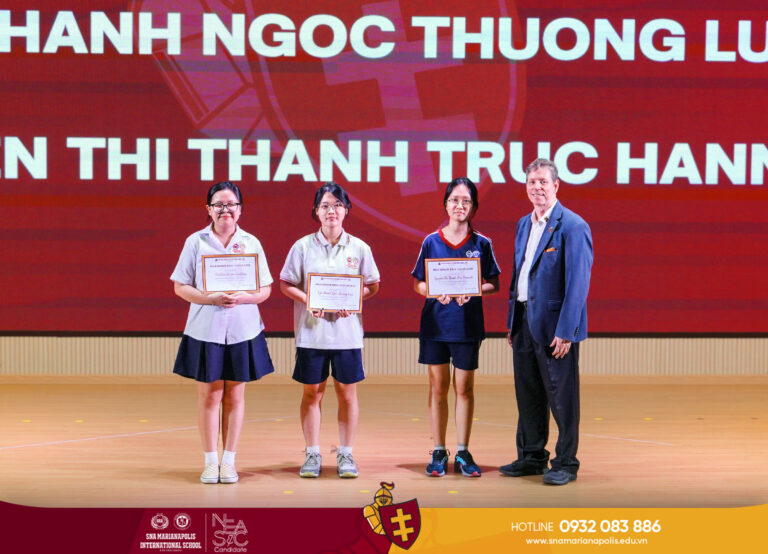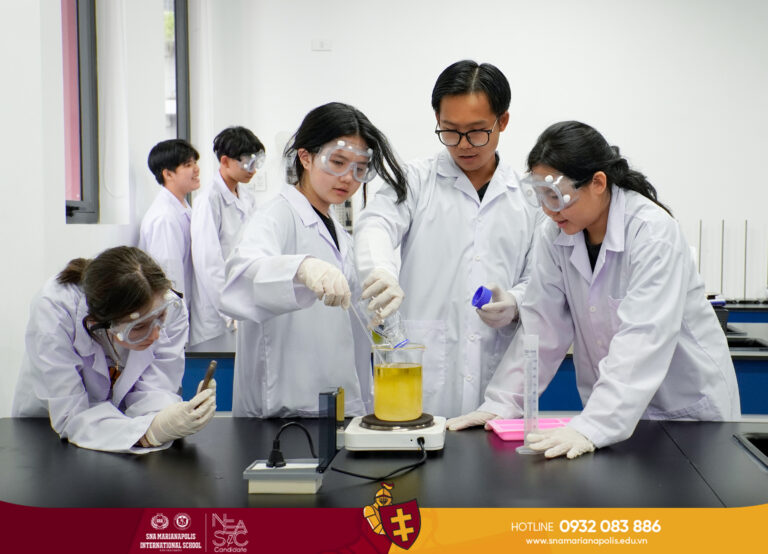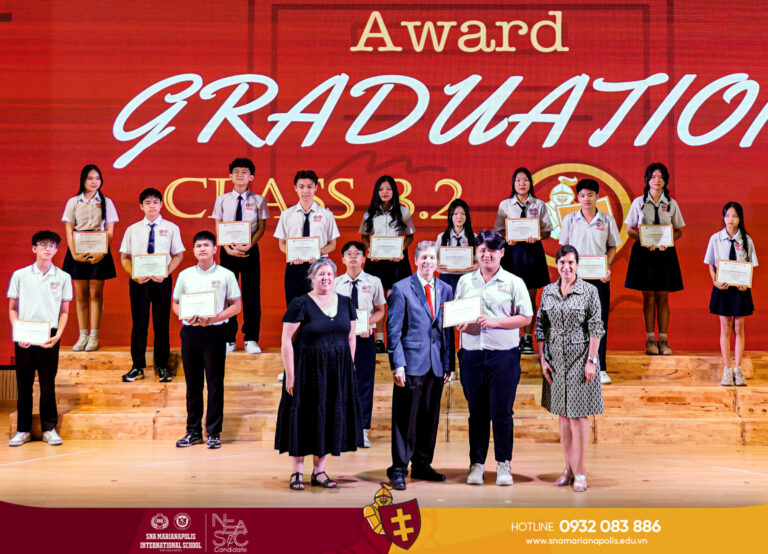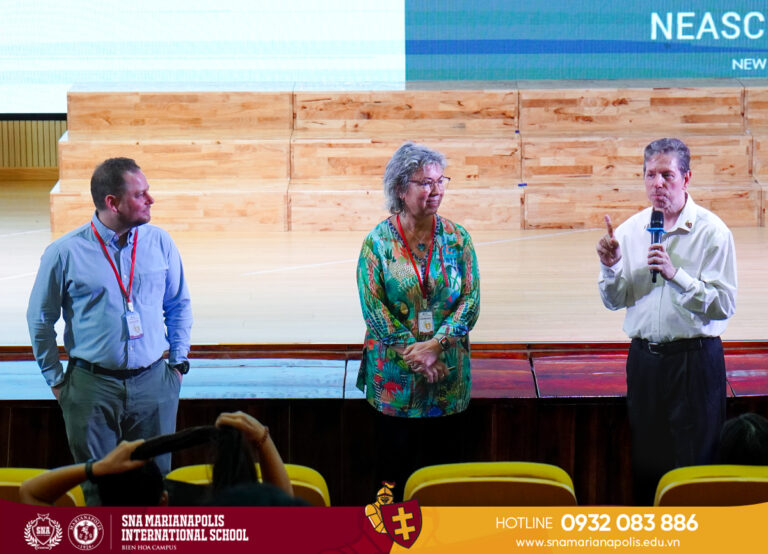TEACHER SPOTLIGHT | MR. ONUR SAHIN
Mr. Onur Sahin originally comes from Turkey and is currently teaching Math to Grades 6,7 and 8 at SNA Marianapolis International School. He’s among the innovative teachers at the school who always bring about transformative learning experiences while continuing to be a constant learner himself. Outside his teaching time, he’s also the leader of the Mind Games club for Secondary students.
From A Successful Math Student To A Strong Math Teacher
Mr. Onur’s love for Mathematics dated way back to his childhood. However, he did not have a natural flair for the subject in Primary school, but fate nudged his way to meet with one teacher in Grade 3 who “changed the way he looked at Mathematics.” The teacher did not ignore him – a weak student at the time, but instead provided him with differentiated lessons and encouraged him to do more Math. Since then, his life has not been the same. In high school, he began helping his friends to succeed in Math and Chess which slowly nurtured his teaching skills. By then, he had known for sure he would seriously pursue the teaching profession. Walking down his memory lane, Mr. Onur did not restrain a contented smile, “It’s because of my passion for the subject that makes me a successful Math student and, later, a strong Math teacher.”

The Inherent Fear and Prejudice Against Math
Like Vietnam and most countries in Asia, Mr. Onur’s home country, Turkey, is where Math reigns at the top of the priority subject list. “Every parent wants their child to learn and excel at Math, imposing unrelenting pressure on the students to appease their parents,” he shares. The irony is that such huge stress along with the lack of proper teacher’s attention and support easily sets students up for failure.

As a blessing in disguise, Mr. Onur experienced such hardship firsthand as a student and knows too well the makings of a Math teacher that can bring out the best in his students and break the long-established prejudice that Math is intimidating. Oftentimes, when a student is asked what they think about the subject, their natural reflex is “Math is difficult. I’m not good at it.” Mr. Onur attributes this inherent fear to the various teaching and learning styles. It requires great efforts from teachers to get to know the individual pace and style of students to accommodate their learning. Peer collaboration is also utilized to the fullest in Mr. Onur’s class to ensure that individuals assist one another in adapting to a new learning style. Sometimes, learning from friends is an effective shortcut to getting the hang of something. Furthermore, the “can do” mindset is the key player in this learning process, not only for Math but also in any other subject. When the teacher and students can put one step out of their former barrier, learning actually starts.
Dealing With Intangible Math Knowledge
There is more than one way that students can develop engaged learning in Mr. Onur’s class, largely through hands-on activities. He admits that the subject is inherently abstract which demands the need for constant illustrations. Instead of dealing with intangible concepts, “if a student has a 3-D object that they can hold and observe, the learning takes place way better” – he acknowledges the idea that has been backed by multiple research articles. Following this, he uses tiles to teach Algebra which he deems the most challenging area of Math.

At SNA Marianapolis, with the majority of the student population coming from public schools, Mr. Onur observes that they were fairly lost to this new teaching method in the beginning. It was more like they did not know how to use the illustration objects. This confusion soon changes with Mr. Onur’s continuous instruction and support. The students finally realize that the subject is enjoyable and doable.

Like many other 21st-century teachers, Mr. Onur often makes use of technology in his teaching. “Math is an easy subject to integrate technology into. We play online games, Kahoot, Blooket, and EdPuzzle.” These platforms program the knowledge into bite-size repetitive quiz questions, enabling students to master their knowledge with each question answered. What makes the use of technology in Math stand out from the other subjects is that many mathematic tools can be converted digitally. Mr. Onur shares an example of students forgetting a protractor but can find an online protractor tool to draw a triangle. Fascinatingly, Mr. Onur does not shy away from admitting he learns some of these uses from the students, which again proves the necessity for teachers to actively keep up with technology in their classrooms.
The Role Of Alternative Assessments In The House Of Mathematics
Mr. Onur’s support includes pre-assessment for weak students at the beginning of each unit. The purpose of these assessments is to survey students’ basic skills and prior knowledge so that he can tailor his instruction and assessment plans accordingly. Especially in this post-Covid era, it is a pressing task for teachers to understand what knowledge students have gained and missed during the two years of interrupted learning. Mr. Onur is adamant that any lost knowledge from that period must be revised before the introduction of new concepts. “Mathematics is like a chain or a house. If a student misses out on a fundamental skill, they fail to put the roof on top of their house.”

Mr. Onur’s classroom is the epitome of various integrated assessments, from formative to summative assessments, from formal tests to project-based tasks. Some assessment projects simulate real-life situations such as role-playing as an inspector or hunter, shopping, running an Algebra café, or using fractions in creating an art object. These promise the best ways to keep students engaged while practicing their Math skills and enjoying arts. Mr. Onur provides much leeway and freedom for students’ feedback in these activities. For instance, if a student can choose to draw an artwork on the computer instead of by hand on paper. The key to project-based assessment, in Mr. Onur’s opinion, is flexibility and creativity.

As such, he shows his opposition to rigidly testing students’ memorization. In Bloom’s Taxonomy, a significant framework in education, memorizing and recalling are at the lowest level, while applying and analyzing are more advanced skills that teachers aim for their students to achieve. Mr. Onur lays out his expectations that students only need to be able to solve math problems instead of remembering definitions or processes.
Therefore, around his room, he hangs posters that display definitions of math concepts and formulae. Students feel free to refer to these reminders in completing class activities and even tests, which is contrary to traditional education where students are graded on their memorization. “If they can apprehend the contextual information, gather information, and solve problems, in my reckon, they are already way ahead of their success compared to only recalling the knowledge from their memory which has been made redundant and replaceable by technological tools.”
Who runs the classroom?
As Mr. Onur teaches all grades of Middle School, his ultimate objective is to prepare students for advanced level Math in High School. To do this, he tries to cover as many crucial Algebra skills for Grade 8 students as possible since they will go on to take Algebra 1, followed by Algebra 2, in Grade 9. His Grade 8 curriculum is thus closely aligned with that of Grade 9 to familiarize students and minimize the risk of their failure. This tactic, called vertical alignment, is extensively adopted in the curricula across different grades at SNA Marianapolis and has proved to help students deepen their learning by building on foundational prior knowledge.

Academic achievements are not the only end goal of Mr. Onur’s class. One by-product that turns out to be a substantial gain is students’ evolving social skills. Even in a Math classroom, social interactions and positive communication are also essential tenets that students and teachers must hone. “They are expected to talk, share ideas, and start the day with a smile. They need to actively run my classroom.”
Putting Himself In His Students’ Shoes
Sitting on Mr. Onur’s desk is a Vietnamese Grade 8 Math textbook. He explains that this has been the object of his study for the past year. He yearns to learn how and what students are learning from public schools, where they mostly come from, so that he can better cater his lessons to their prior experience. “If one method was working for them,” he reveals, “I will continue to build on it.”

Besides the deficiency in subject area content, Mr. Onur’s students often face major language barriers. As part of the resolution for this issue, the Vietnamese textbook acts as a case study to him as he reads it with no linguistic understanding. “It was as if I were an EAL student reading a Math textbook written in English,” he talks about this unique shift of perspective which puts him in the shoes of his EAL students, “Then I realize I could take in mostly everything because Math is basically a universal language comprised of numbers and symbols.” He then starts to delve more into teaching the numeric and symbolic language of this subject with the help of arrows and other signs to demonstrate the different processes and logic.
The Vietnamese Math textbook and Mr. Onur’s case study speak volumes of his dedication to teaching and undying love for Mathematics. The sight of Vietnamese students gathering around him and hysterically showing him what they learned previously from that textbook also remains a touching image of lifelong and autonomous learners.
For more information about the teacher and curriculum, please kindly contact our Admissions via Hotline at 0932 083 886 or fill out the form below:












